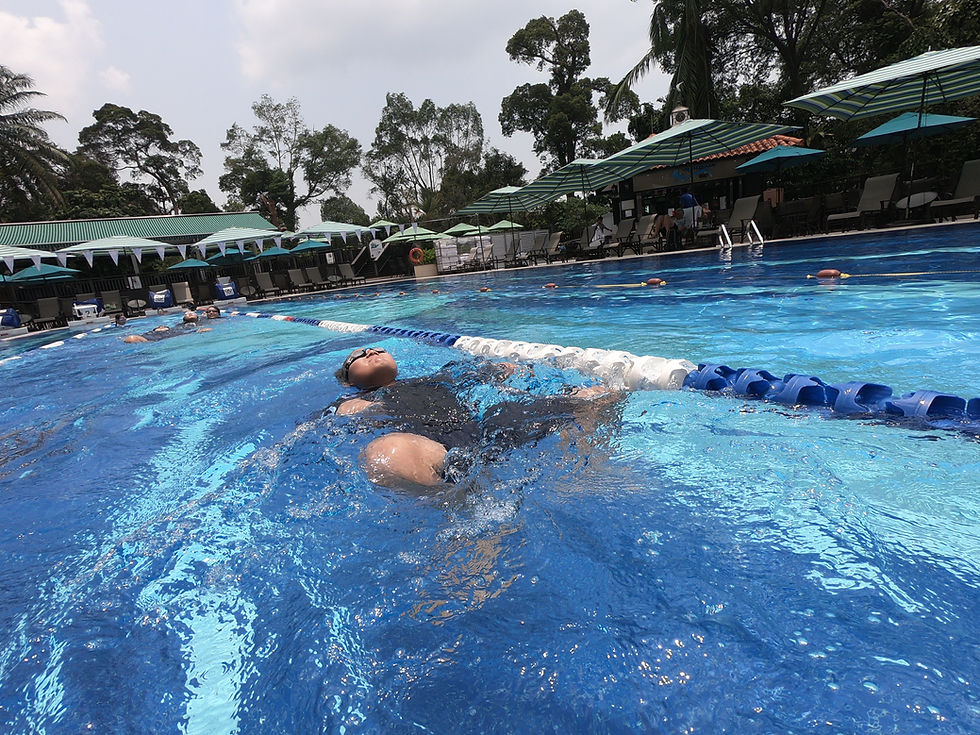How to Teach Children the Importance of Water Safety
- SG Sink Or Swim

- Aug 6
- 3 min read

Whether it's a backyard pool, a beach trip, or a lake day, water can be a fun and exciting part of a child’s life — but it also comes with serious risks. Teaching children the importance of water safety from a young age is one of the most valuable lessons you can offer. It helps prevent accidents, builds confidence, and creates a lifelong respect for aquatic environments.
In this guide, we’ll explore effective ways to educate kids about water safety using simple techniques, practical rules, and engaging activities that make learning stick.
🚨 Why Water Safety Matters for Kids
Drowning is a leading cause of accidental death in children ages 1–14.
Many water accidents happen quickly and silently.
Children are naturally curious and may underestimate danger.
Water safety habits formed early often carry into adulthood.
Teaching kids about water safety isn't about scaring them — it’s about empowering them with the knowledge and habits to stay safe and have fun.
🧠 Tips for Teaching Kids Water Safety
1. Start with Age-Appropriate Conversations
Use simple, clear language to explain basic safety rules. For example:
“Always ask an adult before going near water.”
“Wear your floaties or life jacket when we're in a boat.”
“Never run near the pool — the floor is slippery.”
✅ Keep it calm and positive, focusing on making safe choices.
2. Teach the Key Rules of Water Safety
Here are essential rules every child should know:
Always swim with an adult or buddy
Never swim alone
Look for and follow pool or beach safety signs
Avoid drains or suction outlets
Don’t dive in shallow water
Wear a life jacket on boats or open water
Create a fun poster or checklist that reinforces these rules at home or before outings.
3. Use Games to Reinforce Safety Messages
Kids learn best through play. Use water-related games to teach safety:
“Red Light, Green Light” at the pool edge to teach stop-and-go listening.
“Find the Lifeguard” scavenger hunt at the beach.
Water safety role-playing: pretend someone falls in and demonstrate how to call for help.
✅ Use repetition and reward systems to reinforce safe behavior.
4. Introduce Floating and Treading Early
Teach children how to:
Float on their back for rest and visibility
Tread water to stay above the surface
These life-saving skills can buy time in emergencies and boost water confidence.
5. Set a Strong Example
Children mirror adult behavior. Show them what safe swimming looks like:
Wear a life jacket when boating
Stay off phones while supervising
Respect pool rules and boundaries
Discuss water safety openly and often
✅ Your habits help shape their attitudes toward safety.
6. Enroll Them in Swim Lessons
Professional swim lessons not only teach stroke technique — they also instill:
Respect for water
Confidence in emergencies
How to enter, exit, and move through water safely
Look for programs with a focus on safety-first instruction, especially for younger kids.
7. Talk About Emergency Action
Even young children should know:
How to call 991
How to get an adult if someone is in trouble
That they should never jump in after someone — instead, throw a float or rope
Use stories or simple cartoons to explain these actions clearly.
🛟 Bonus Tools and Ideas
Safety Songs – Make up a song to the tune of a nursery rhyme about water rules
“Safety Spotter” Role – Assign your child to watch for rule-following during swim trips
Use Books and Videos – Look for water safety picture books or kids’ swim safety videos on YouTube
🏁 Final Thoughts
Teaching children water safety is about more than avoiding accidents — it's about building awareness, responsibility, and confidence. With the right approach, kids can learn to enjoy the water while understanding the rules that keep them and others safe.
The earlier you start, the more natural these habits will become — and the better prepared your child will be for a lifetime of safe swimming.





Comments